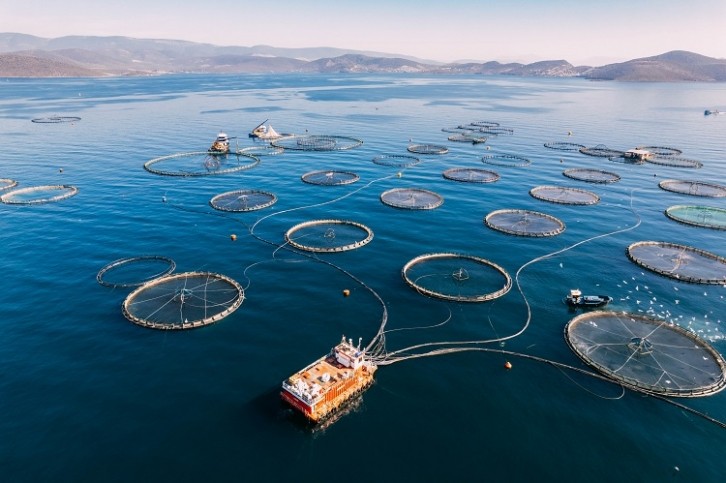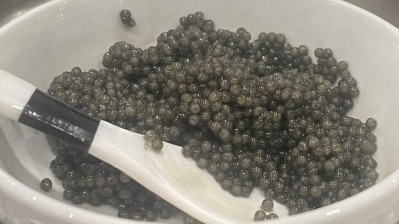How sustainable is aquaculture?

Fish farmed through aquaculture has surpassed wild caught fish for the first time, a report by the Food and Agriculture Organisation (FAO) has revealed, contributing to over 57% of aquatic animal products intended for direct human consumption.
According to the report, for example, aquaculture and fisheries produced 223.2 million tonnes in 2022 alone, contributing to around 15% of the total animal protein supply.
With this vast scale, it is more important than ever that aquaculture remains sustainable.
What is aquaculture?
Aquaculture is the controlled cultivation and rearing of fish and seafood. Think fish farming and you won’t be far off.
According to the National Ocean Atmospheric Association (NOAA), aquaculture is “the breeding, rearing, and harvesting of animals and plants in all types of water environments.”
Because of its strong sustainability credentials compared to wild caught fish, the use of aquaculture as a method has grown significantly in recent years. But how does it really stack up on sustainability?
What are the sustainability benefits of aquaculture?
Aquaculture has a range of benefits, compared to the conventional fishing industry, which causes biodiversity loss and damages the health of the oceans. However, as with any form of farming, it depends on the method used.
“As the world population grows, so does the demand for fish. Fish is a high protein, low fat, healthy and nutritionally rich food. But traditional methods of wild capture fishing can't possibly meet the demand,” Sophia Balod-Lorenzo, global press and PR manager for the Aquaculture Stewardship Council, told FoodNavigator. The organisation provides certification for 'responsibly farmed seafood.'
Cultivated fish
Another sustainable way of getting fish is skipping the ocean entirely. Cultivated fish is being produced by Israeli company Wanda Fish, who make cultivated bluefin tuna to serve raw. Over in Europe, German start-up Bluu Seafood is developing cultivated fish fingers and cultivated fish balls.
“Aquaculture has the capacity to meet global demand while reducing the pressure on wild capture fisheries.”
Different types of aquaculture farms have different sustainability benefits. Some have lower levels of electricity consumption, or carbon footprint, than others. “For example, cages have a lower carbon footprint as they do not require high energy inputs to move or pump water in comparison to recirculating aquaculture systems (RAS).” RAS is sealed off from the environment, and replaces the natural flow from the sea with a water filtration and circulation system, meaning it can be placed on land.
Unlike RAS, cages rely on a natural current, alongside tidal energy for oxygenated water and waste elimination. “Cage culture has a lower capital cost and does not compete with or require the clearing of land that can be used for other food production.”
RAS farms are usually a lot more energy-intensive than open systems, like marine or lake cages. They use energy for oxygen provision, temperature regulation, waste removal and a range of other things that nature would provide in such an open system.
“Most energy inputs to RAS are usually in the form of electricity, as opposed to diesel and other fuels, and given the much higher reliance on energy in these systems the source of that electricity becomes very important. RAS situated in regions with electricity grids composed of hydroelectric or other renewable generation can still have relatively small carbon footprints despite their high energy inputs. However, RAS drawing electricity from fossil fuel sources can have substantially larger carbon footprints compared to other forms of seafood production.”
If one wants a guarantee of sustainability for an RAS farm, having a low-emissions electricity source is key.
RAS, however, provides more flexibility than cages. Farms can be located much closer to consumers, meaning that the environmental costs of transportation are reduced. They also, Balod-Lorenzo told us, significantly reduce the risk of escapes or disease transmission to wild fish populations, as they entirely remove fish from their natural habitats.
What are the main drawbacks of aquaculture?
Aquaculture, despite having many benefits, is not the Holy Grail of fish production in all circumstances. If not done properly, it has its own drawbacks.
“If aquaculture is not well managed, it can have a range of adverse impacts, including water pollution, disruption of local ecosystems and poor working conditions,” Balod-Lorenzo told us.
“The faster the aquaculture industry grows, the greater its potential impact on the environment and local communities.”
Some aquaculture practices can, according to the World Economic Forum (WEF), ‘harm habitats and communities.’













